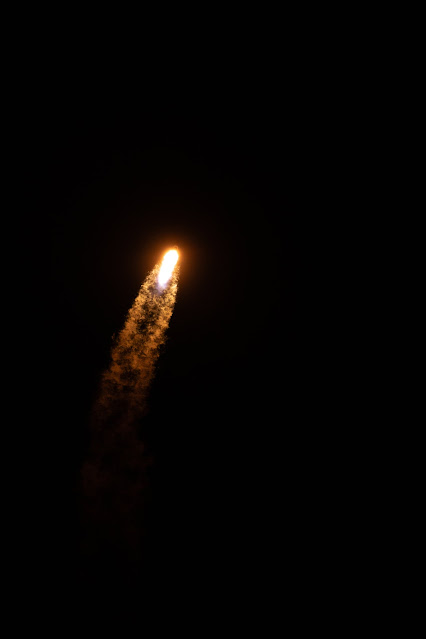New Expedition 70 Crew Photos: February 2024 | International Space Station
The seven-member Expedition 70 crew gathers for a dinner time portrait inside the International Space Station's Unity module. In the front row from left are, Flight Engineers Konstantin Borisov of Roscosmos, Jasmin Moghbeli of NASA, and Satoshi Furukawa from Japan Aerospace Exploration Agency (JAXA). In the back row are, Commander Andreas Mogensen from the European Space Agency (ESA), NASA Flight Engineer Loral O'Hara, and Roscosmos Flight Engineers Oleg Kononenko and Nikolai Chub of Russia.
Expedition 70 Flight Engineers (from left) Jasmin Moghbeli and Loral O'Hara, both from NASA, pose together for a portrait inside the International Space Station's Unity module.
European Space Agency (ESA) astronaut and Expedition 70 Commander Andreas Mogensen of Denmark smiles for a portrait as he maneuvers in the vestibule in between the Unity and Tranquility modules aboard the International Space Station.
NASA astronaut and Expedition 70 Flight Engineer Jasmin Moghbeli is pictured inside the International Space Station's Destiny laboratory module opening a science freezer that hosts research samples for preservation and analysis.
NASA astronaut and Expedition 70 Flight Engineer Loral O'Hara works on a bone cell study inside the Life Science Glovebox located inside the International Space Station's Kibo laboratory module.
A Russian Progress 87 cargo spacecraft loaded with nearly three tons of food, fuel, and supplies is currently in orbit heading to the International Space Station, targeting early Saturday, for docking. Progress 87 successfully launched from the Baikonur Cosmodrome in Kazakhstan at 10:25 p.m. EST Wednesday, Feb. 14. On Saturday, Feb. 17, the cargo craft will automatically dock to the aft port of the Zvezda service module at 1:12 a.m., with cosmonauts Oleg Kononenko and Nikolai Chub on duty to monitor the spacecraft’s arrival.
Follow Expedition 70 Updates:
https://blogs.nasa.gov/spacestation/
Expedition 70 Crew
Station Commander: Andreas Mogensen of the European Space Agency (Denmark)
Roscosmos (Russia): Oleg Kononenko, Nikolai Chub, Konstantin Borisov
JAXA: Flight Engineer Satoshi Furukawa (Japan)
NASA: Jasmin Moghbeli, Loral O'Hara (USA)
An international partnership of space agencies provides and operates the elements of the International Space Station (ISS). The principals are the space agencies of the United States, Russia, Europe, Japan, and Canada. The ISS has been the most politically complex space exploration program ever undertaken.
Image Credit: NASA's Johnson Space Center (JSC)
Image Dates: Feb. 7-12, 2024
#NASA #Space #ISS #Science #Astronauts #LoralOHara #JasminMoghbeli #UnitedStates #AndreasMogensen #Denmark #Europe #ESA #SatoshiFurukawa #JAXA #Japan #日本 #Cosmonauts #Russia #Россия #Roscosmos #Роскосмос #HumanSpaceflight #Expedition70 #InternationalCooperation #STEM #Education












.jpg)
.jpg)



